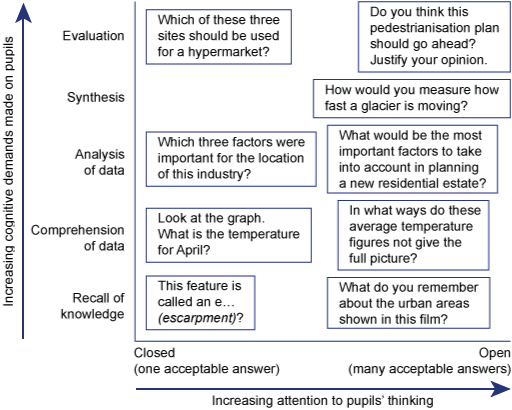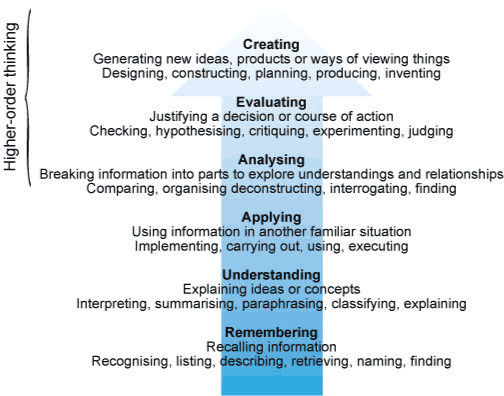3.1 Questioning
You may ask students questions to develop a narrative of the lesson or to reinforce instructions and learning intentions as a key management tool. Other questions are intended to assess knowledge, understanding and skills. These assessment questions may range in their cognitive challenge and may be either closed or open (Figure 2).
Aim to make your questioning inclusive. Planning questions before teaching a lesson and tailoring these questions to students within your classes can build student motivation. Remember there are different types of question that elicit different types of response. Try to stretch and challenge all of your students. Try not to put a ceiling on what they might be able to achieve with a little support (or scaffolding).
Activity 5 Dimensions of questioning
Part 1
Print Figure 2 and annotate the diagram to show your ideas on:
- which students would benefit from the different types of question
- when it might be appropriate to ask the different types of question.
Part 2
For a lesson you are planning, or using the Year 12 lesson plan [Tip: hold Ctrl and click a link to open it in a new tab. (Hide tip)] , devise a series of questions that you could pose, which vary in terms of cognitive challenge and closed/open nature. Try to list a minimum of twelve questions and then categorise these questions using Bloom’s revised taxonomy (Figure 3).
Practical strategies for effective questioning for AfL include:
- ‘no hands up’ to help to involve all students
- ‘hot-seating’ to extend interaction with one student and to scaffold learning and drill down into knowledge and understanding (this can also include students posing questions)
- allowing sufficient wait time for a student to respond and, crucially for you to feedback, take some time to evaluate student responses, especially if the answer was unexpected
- using ‘pose-pause-pounce-bounce’. ‘Pose’ a question, students talk about it in a pair. After a few minutes, ‘pounce’ on one pair and ask for a response. The ‘bounce’ involves getting other pairs to respond to the response.



